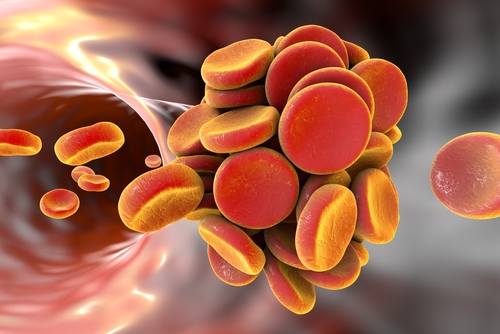Arterial Blood Clots May Be First Sign of Cushing’s Syndrome, Case Report Shows
Written by |

In rare cases, the appearance of blood clots in arteries may be the first symptom of Cushing’s syndrome, a case report shows.
That finding, “Arterial thrombosis as primary presentation of endogenous Cushing’s syndrome,” was published in the journal BMJ Case Reports.
Cushing’s syndrome is a condition characterized by excess cortisol in circulation, often caused by tumors in the pituitary or adrenal glands. Prolonged exposure to elevated cortisol levels puts patients at risk of metabolic complications, including obesity, high blood pressure, diabetes, and cardiovascular events.
Cushing’s syndrome patients often have elevated levels of blood clotting factors, increasing the chances of clots in the deep veins of the legs, groins, or arms. However, albeit much more rarely, these blood clots may be found in arteries.
Indian researchers reported for the first time the case of a 31 year-old woman with Cushing’s syndrome whose first sign of the disease was widespread blood clots (arterial thrombosis).
The patient had extensive arterial thrombosis affecting the abdominal aorta, complete obstruction of the main spleen and liver arteries, as well as of other visceral arteries, with tissue damage to the spleen and both kidneys.
At that time, she had experienced fever, recurrent abdominal pain, and left side chest pain for three weeks. In the past three years, the woman had gained 15 kilograms (approximately 33 pounds), and she had a history of diabetes and high blood pressure for the past three months.
A detailed physical examination revealed a Cushing’s-like physical appearance, with her fat tissue being mostly distributed within the abdominal area, along with some fat above the clavicles and on the back of the neck. She had a round face, reddish stretch marks in her abdominal area, excessive body hair, and had features of easy bruising.
Additional exams also detected abnormal breath sounds and a mildly bigger spleen, which all were suggestive of Cushing’s syndrome.
Upon analysis of the different arterial blood clots by computer tomography (CT) scans, the team ruled out other potential causes of primary arterial thrombosis and heart conditions.
To better understand what was causing the blood clots, researchers examined her coagulation profile, which revealed high levels of factor VIII and von Willibrand Factor (vWF).
The team also found that the patient’s Cushing’s syndrome had been caused by an increase in the adrenocorticotropic hormone (ACTH), which makes the adrenal glands produce cortisol. But an analysis of the pituitary — where ACTH is produced — failed to detect any alteration that explained the findings.
The patient denied invasive testing to confirm a pituitary tumor, and started treatment with the anti-coagulation agent Xarelto (rivaroxaban) and once-daily heparin, which were discontinued due to a gastrointestinal bleeding.
She also began treatment with oral ketoconazole to manage ACTH production. Despite a good initial response to treatment, cortisol levels remained elevated and the patient underwent surgical removal of both adrenal glands (adrenalectomy).
“This case highlights the complex and uncommon presentation of endogenous ACTH-dependent Cushing’s syndrome with extensive arterial thrombosis,” researchers wrote.
“Though the exception rather than the rule, a high index of suspicion and meticulous clinical evaluation is crucial in making a timely diagnosis and avoiding catastrophic outcomes,” they added.





